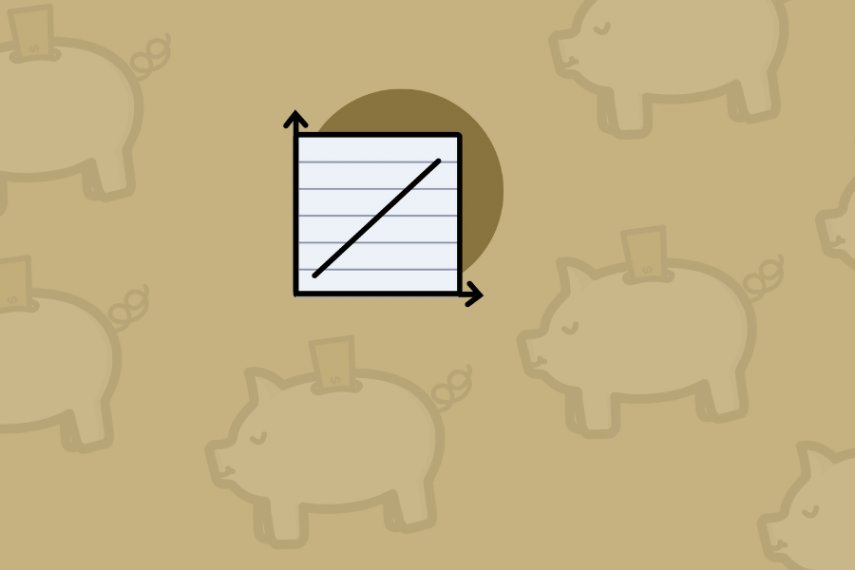A quick and easy overview of stocks vs. bonds -- and what they mean for your portfolio
Welcome to the world of stocks and bonds, the two cornerstones of the market. Stocks and bonds have a permanent position inside almost all
portfolio theories and are more nuanced than you might think. They might seem mundane, but the closer you look, the more attractive they get.
Let's explore how to get the most out of them.
An Overview of Stocks & Bonds
Stocks
•
Basics: When a company goes public, it's typically no longer owned by one entity or by a small collective of people, but by its shareholders. That's where
stocks come in. Stocks represent a fractional piece of ownership in a company, usually quite small. As a reward for their ownership, shareholders hope to reap some benefits like their stocks appreciating in value over time and potentially through dividends.
•
Caveats: Where there's a reward, there's also a risk, and vice versa. Sure, individual stock positions can make you money, but like any investment, they also can potentially lose money.
Bonds
•
Basics: Bonds are debt obligations owed by the bond issuer. There are two main types of bonds--corporate and government. A government or company issues bonds to raise funds and agrees to repay the bond buyers, in return to this "lending" of money from the individual to the company, the company will pay an individual bond holder interest.
•
Caveats: Standard government and corporate bonds often come with more security but also less upside than a typical stock position. While the S&P 500 has averaged an annual return of over
11% per year between 1957-2021, the best you'll often do on a safer bonds like a 30 year US Treasury is about
3.7% (as of March 2023)--bonds rarely beat the stock
market. Not all bonds are created equal, either. While government-backed bonds can be considered safe as a bunker, the world of corporate bonds is riskier depending on the issuer, and their yields often reflect it.
How to Use Stocks and Bonds
While every investor's holdings are different, and many diversify their portfolios into
alternatives, stocks and bonds dominate most traditional portfolios. Of course, people use these two very different investment vehicles for different purposes.
Stocks
Stocks are often the engine of a portfolio, driving its returns and compounding them over the decades. Regarding individual stocks and funds, the sky is the limit to their potential ROI. As for the broad stock market, investors hope for average returns between 6-7% per year, or more, with deviations to either side in any given year. With an initial investment of $1,000 and a contribution of $500 per month, an investor could expect to accrue about
$2.7M over 40 years by investing in stocks alone. In short, stocks fuel real growth in your cash, especially over the long run.
Bonds
Compared with an investment in stocks, putting the same amount of cash into bonds would yield an investor $455K due to its much lower 3% annualized return--yep, that's a -83% difference. So, why bother with bonds? People seek out bonds for their stability and ability to produce reliable income, not for their returns. Bonds typically have an inverse relationship with stocks and tend to defend against losses during market downturns.
Crafting Your Strategy
Of course, there is no one-size-fits-all approach to portfolio allocation. Just because something works for someone else doesn't mean it'll work for you. We recommend you create a portfolio mixed with stocks and bonds that suits your needs.
Things to Consider
•
Age: How you divvy up your portfolio between stocks and bonds is heavily dependent on your age. Stocks have more upside but also more risk, which we should seek more or less at different stages of life. Someone looking to retire should seek less exposure to the market risks and lean more heavily on bonds as they seek to protect what they've accrued.
Younger investors can sometimes afford to be almost 100% stocks.
•
Finances: How much you can invest and how much risk you can take on depends a lot on your financial situation. If you're stable with a reliable income, emergency fund, and enough to pay your bills and then some, taking on the elevated risks associated with stocks and their more
volatile nature is generally okay--and vice versa.
•
Retirement: Consider your
retirement savings as early as possible. Your
retirement goals will help shape your investment strategy, as a need for more income will likely take you toward a more stock-heavy approach to investing, and a
more passive, safer approach will include more bonds.
•
Risk tolerance: How much volatility can you withstand? The markets have been rough sailing over the last few years as investors weathered one
seeming crisis after another. Let it ride if you're unbothered by the twists and turns and in it for the long haul. If you'd rather avoid that rollercoaster, you may be better off with a higher bond allocation.
•
Combine it all: No individual factor here means anything in isolation. Based on the above considerations, you'll need to review your situation holistically and decide what makes the most sense for you and your money.
Conclusion
Stocks and bonds are potent tools for building and preserving wealth, but only when approaching them with a well-thought-out strategy. The keys to success are understanding and considering your financial situation, goals, and risk tolerance as you craft a portfolio that works for you.
And luckily, you're already well on your way. If you keep learning, develop healthy habits, and log your 3 minutes per week in your Pocketnest app, the rest will take care of itself.
Download Now





